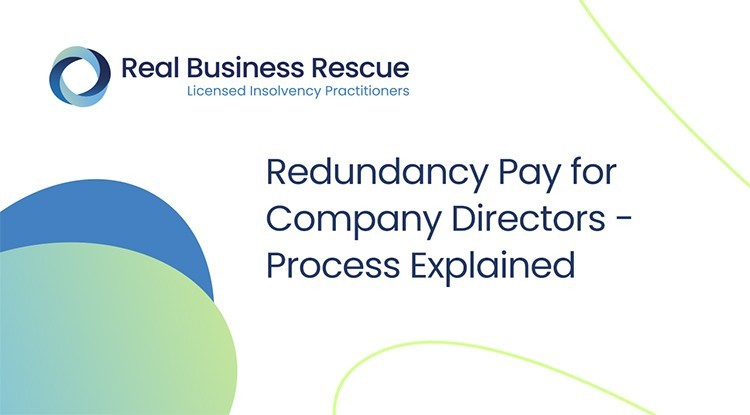Who Pays Redundancy Money? Recognizing Employer Obligations in the UK
Who Pays Redundancy Money? Recognizing Employer Obligations in the UK
Blog Article
Checking Out the Interplay In Between Business Redundancy and Business Versatility for Future Development
In the vibrant landscape of today's business world, the detailed relationship in between company redundancy and business adaptability emerges as a crucial element for sustained development and success. Firms frequently encounter the obstacle of striking a fragile balance between maintaining a level of redundancy to reduce dangers and fostering versatility to react quickly to the ever-evolving market needs.
Relevance of Firm Redundancy
Company redundancy is an essential aspect that improves business strength and mitigates functional threats. By incorporating redundancy measures within the organizational structure, firms can better endure unanticipated interruptions and changes in the service setting. Redundancy works as a calculated buffer, permitting companies to adjust and react successfully to unforeseen difficulties without compromising important operations.
One key aspect of the value of firm redundancy is its duty in making certain connection during times of crisis. When confronted with unexpected adjustments or emergency situations, redundant systems, resources, or employees can action in to maintain essential features and avoid extensive disturbances. This continuity not only safeguards the firm's track record and customer trust fund however likewise lessens financial losses and functional downtime.

Methods for Business Versatility

Another essential method is buying technology and infrastructure that can support versatility and scalability. Applying electronic devices, automation, and information analytics can streamline operations, improve efficiency, and supply useful understandings for educated decision-making. In addition, developing versatile business frameworks that permit fast changes to market characteristics and consumer demands is essential for staying competitive in a quickly progressing atmosphere. By proactively recognizing prospective interruptions and chances, organizations can proactively thrive and adjust in an ever-changing organization landscape.
Balancing Redundancy and Versatility
Attaining a harmonious balance in between operational redundancy and organizational adaptability is extremely important in navigating the intricacies of a vibrant business atmosphere. Striking the appropriate balance between redundancy and versatility is a fragile process that requires a deep understanding of the company's objectives, industry dynamics, and danger resistance.
To achieve this balance, companies require to carry out normal analyses of websites their procedures to recognize locations where redundancy is essential for threat reduction and where flexibility can drive technology and development. Applying flexible structures, fostering a society of continual understanding and renovation, and urging open interaction throughout all levels of the organization are essential techniques to harmonize redundancy and adaptability properly. By aligning these 2 essential components, firms can position themselves for sustainable development and success in an ever-changing organization landscape.
Instance Research Studies on Adjustment Success
In examining instances of successful business adjustment, it comes to be evident that the interplay between functional redundancy and versatility is a specifying factor in shaping durable services. A DVD rental solution, Netflix showed impressive adaptability by transitioning into a streaming platform when digitalization disrupted the industry. These situation researches emphasize the value of functional redundancy paired with business flexibility in cultivating lasting development and competition.
Structure Strength for Future Development
Building durability for future growth needs a critical positioning of functional processes with market dynamics and arising patterns. Firms should adjust to transforming settings by promoting a culture of adaptability, innovation, and continuous enhancement.
Furthermore, cultivating solid connections with stakeholders, such as customers, employees, suppliers, and the navigate to these guys neighborhood, is necessary for weathering uncertainties and keeping count on and assistance throughout stormy times. Effective interaction and transparency play an essential role in structure durability, as they help line up expectations and assist in cooperation in navigating uncertainties.
Moreover, companies require to prioritize understanding and advancement efforts to upskill staff members and equip them with the required devices to adjust to changing situations. By purchasing their labor force, firms can improve their adaptability and dexterity, inevitably strengthening their resilience for sustainable future growth.
Final Thought

In the vibrant landscape of today's company globe, the elaborate partnership between firm redundancy and organizational versatility emerges as a critical element for continual development and success. Companies usually face the difficulty of striking a fragile balance between keeping a degree of redundancy to alleviate risks and promoting versatility to react swiftly to the ever-evolving market demands.To accomplish this equilibrium, companies need to carry out normal analyses of their operations to determine locations where redundancy is essential for risk mitigation and where versatility can drive innovation and growth.In final thought, the interplay in between firm redundancy and business flexibility is essential for future growth. Building durability via a mix of redundancy and flexibility will certainly make certain that business are prepared for the challenges of the future.
Report this page